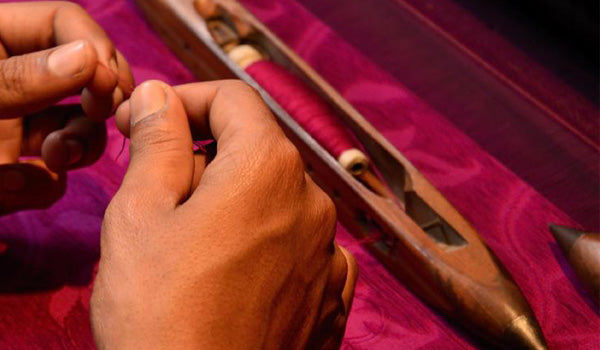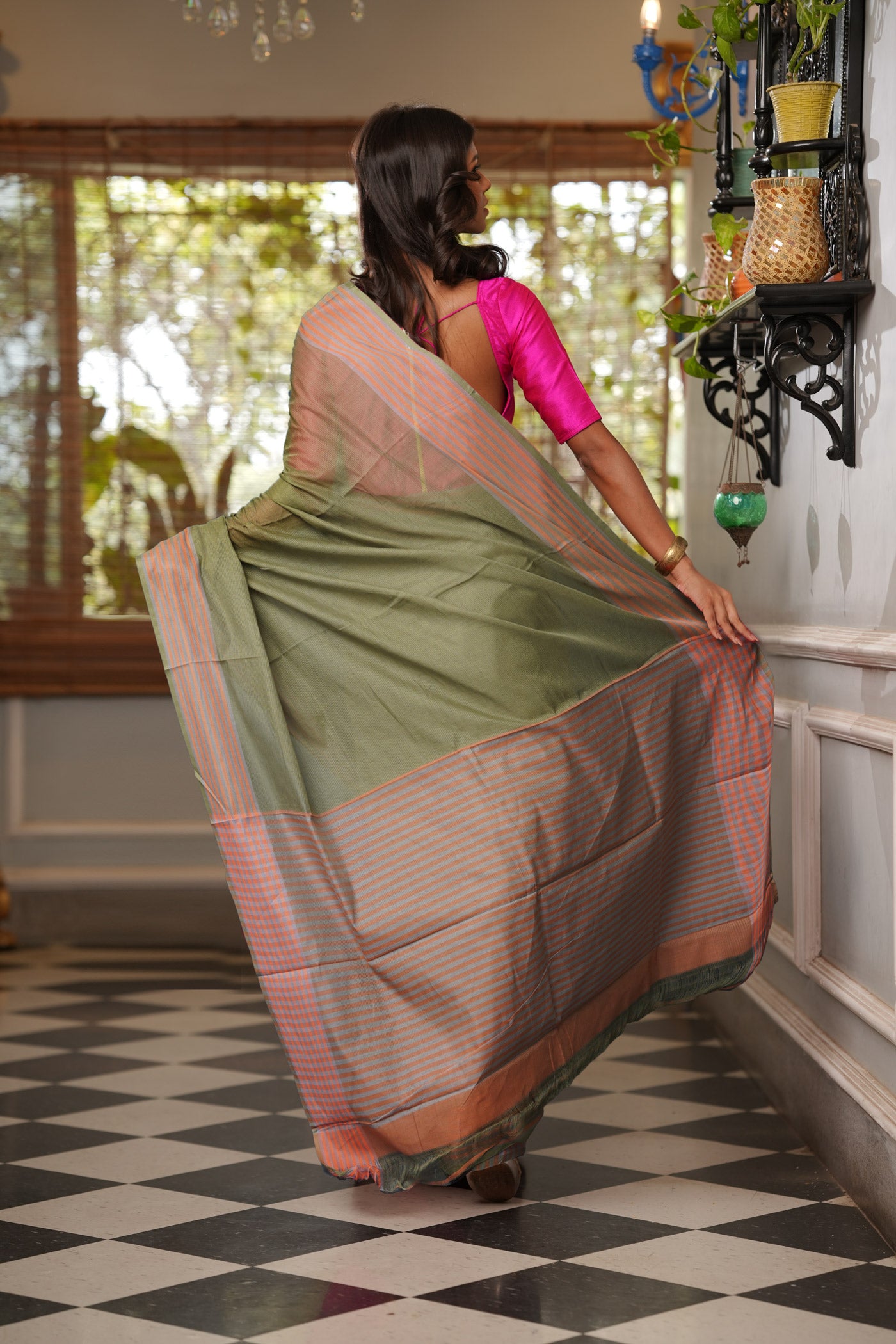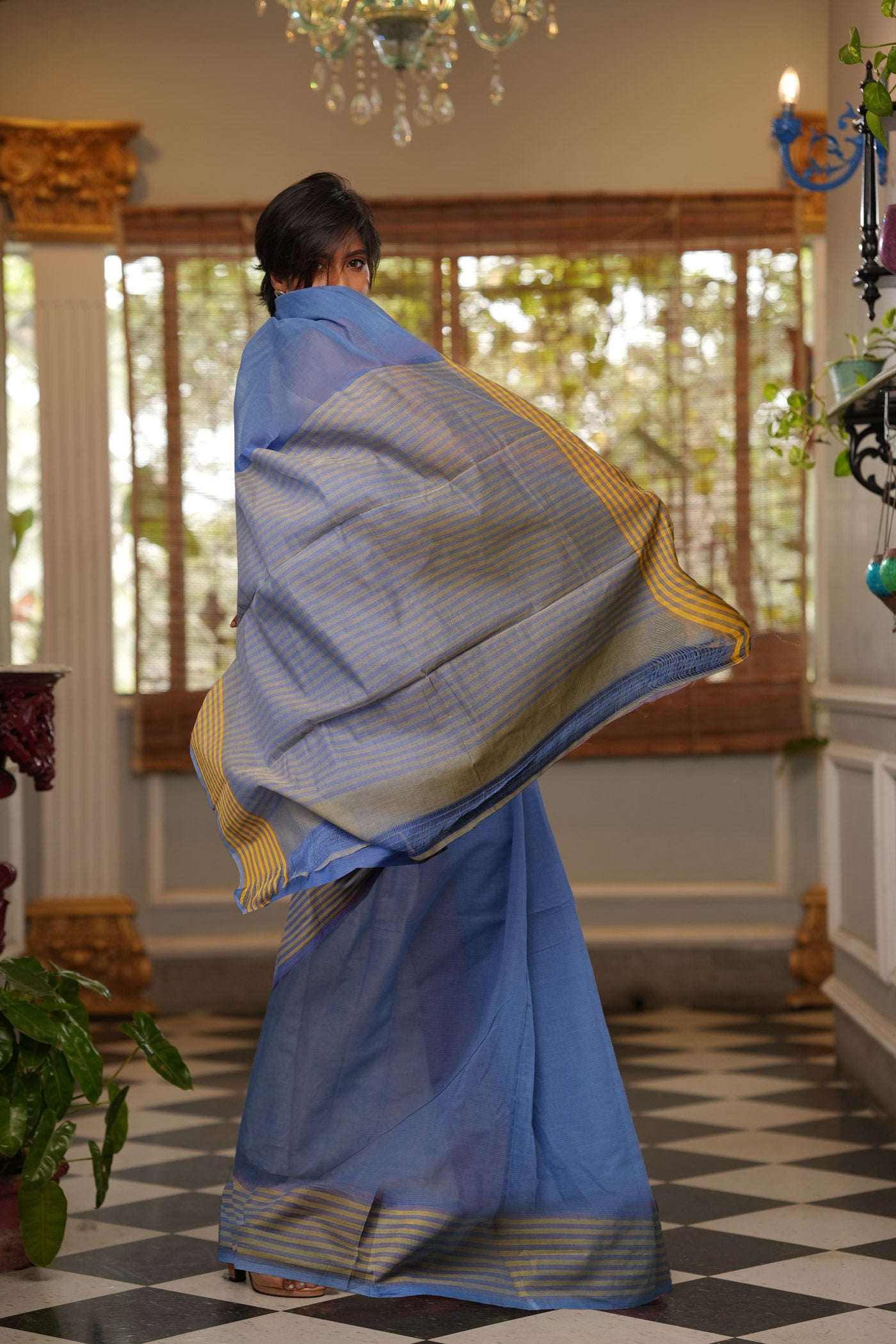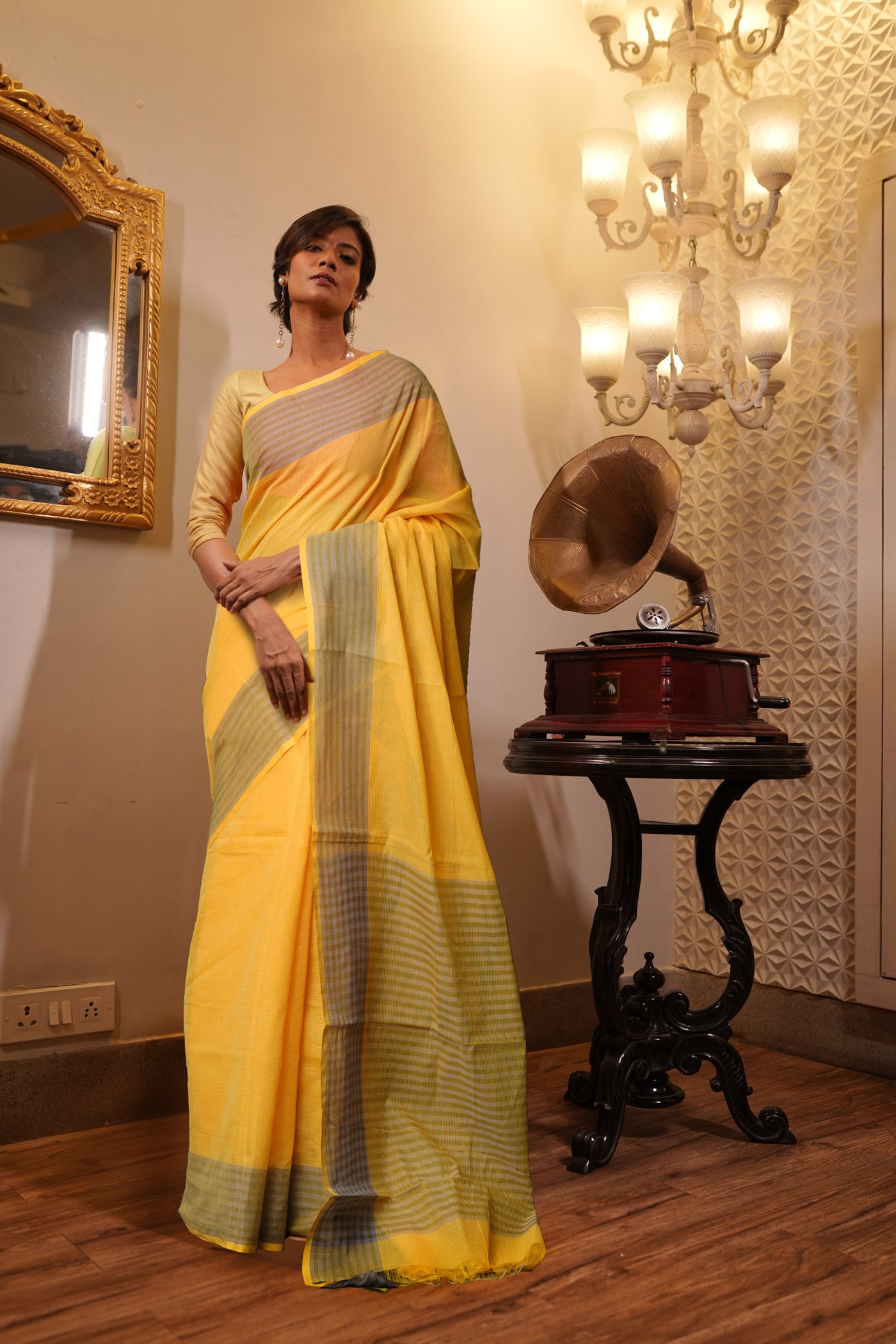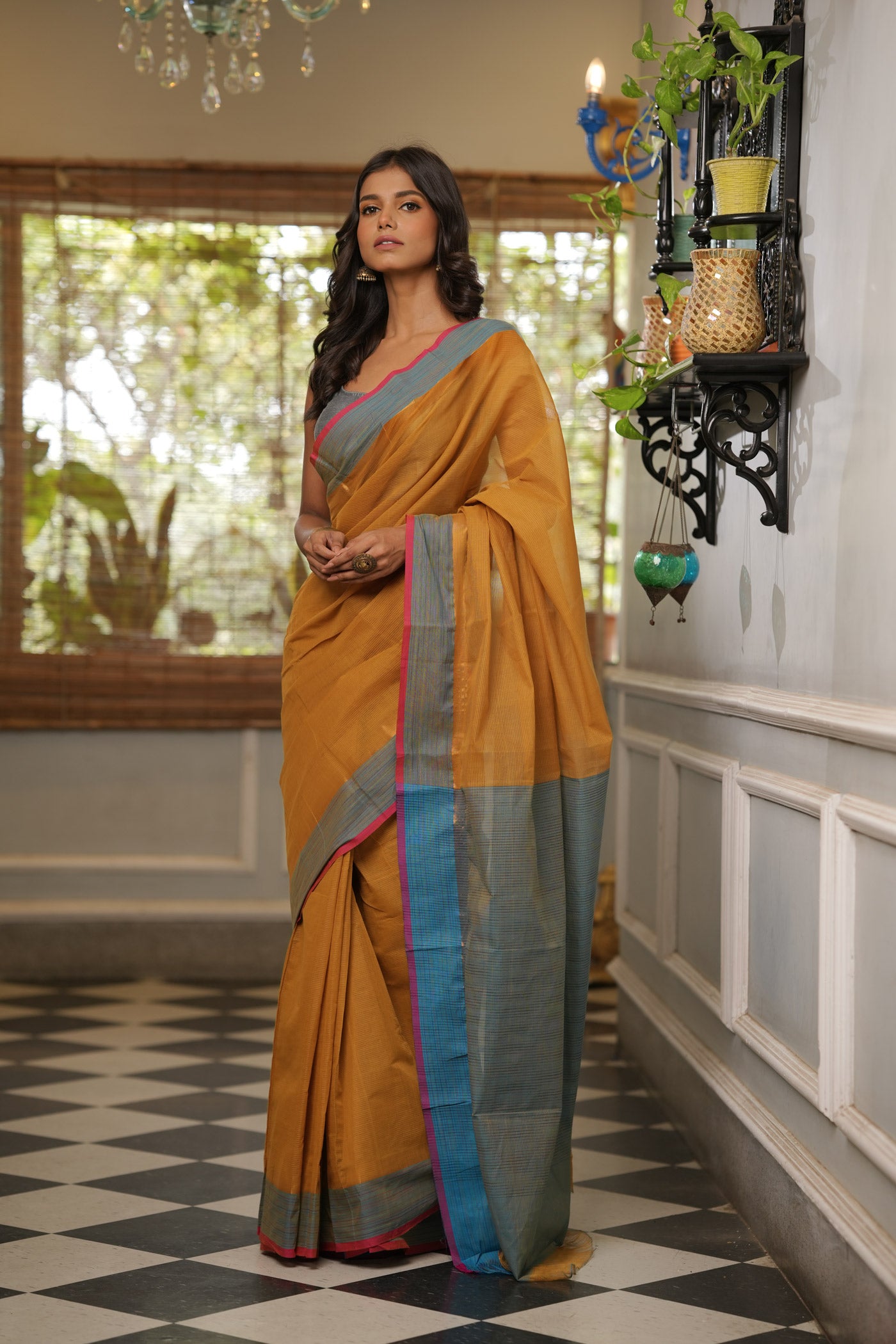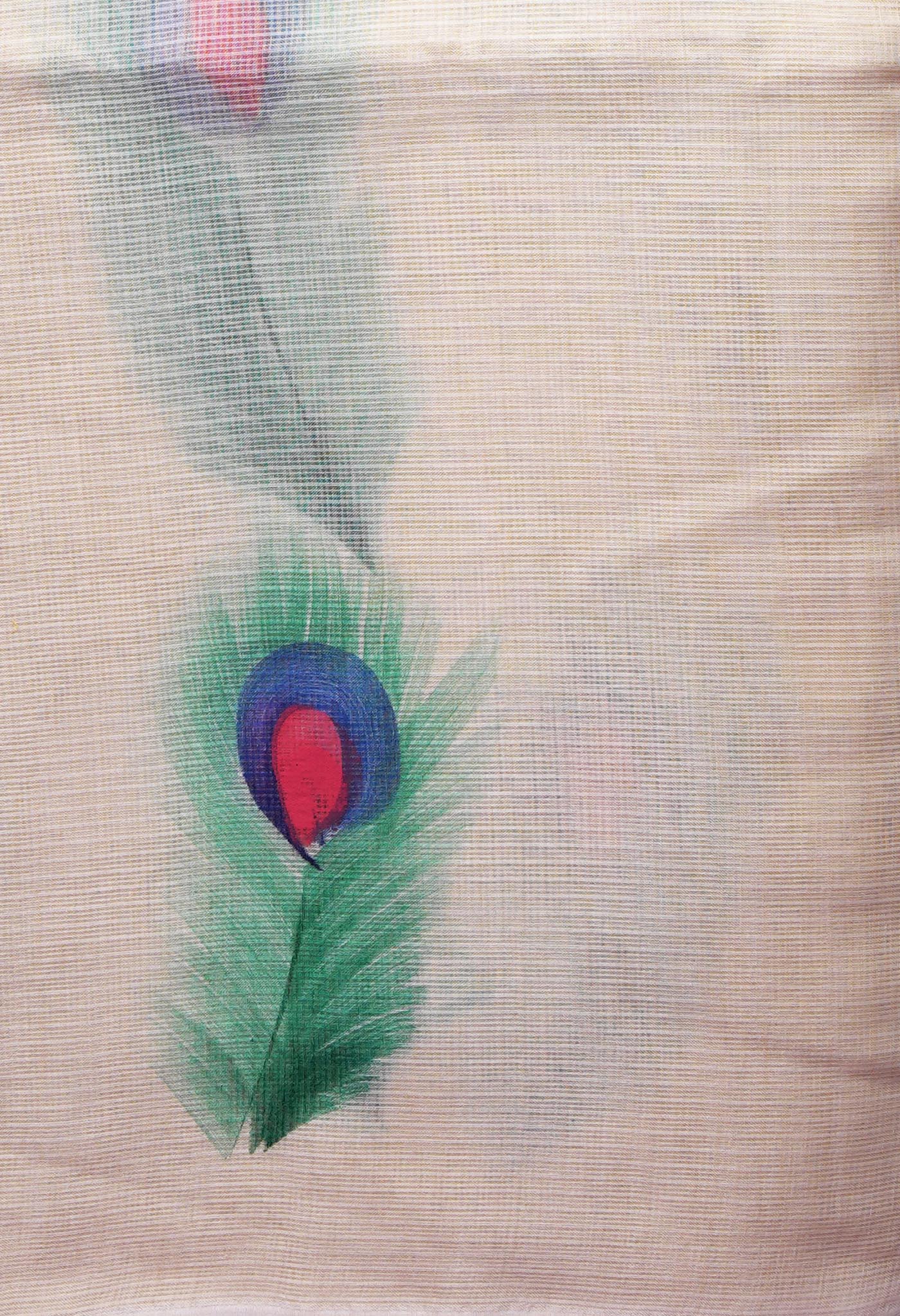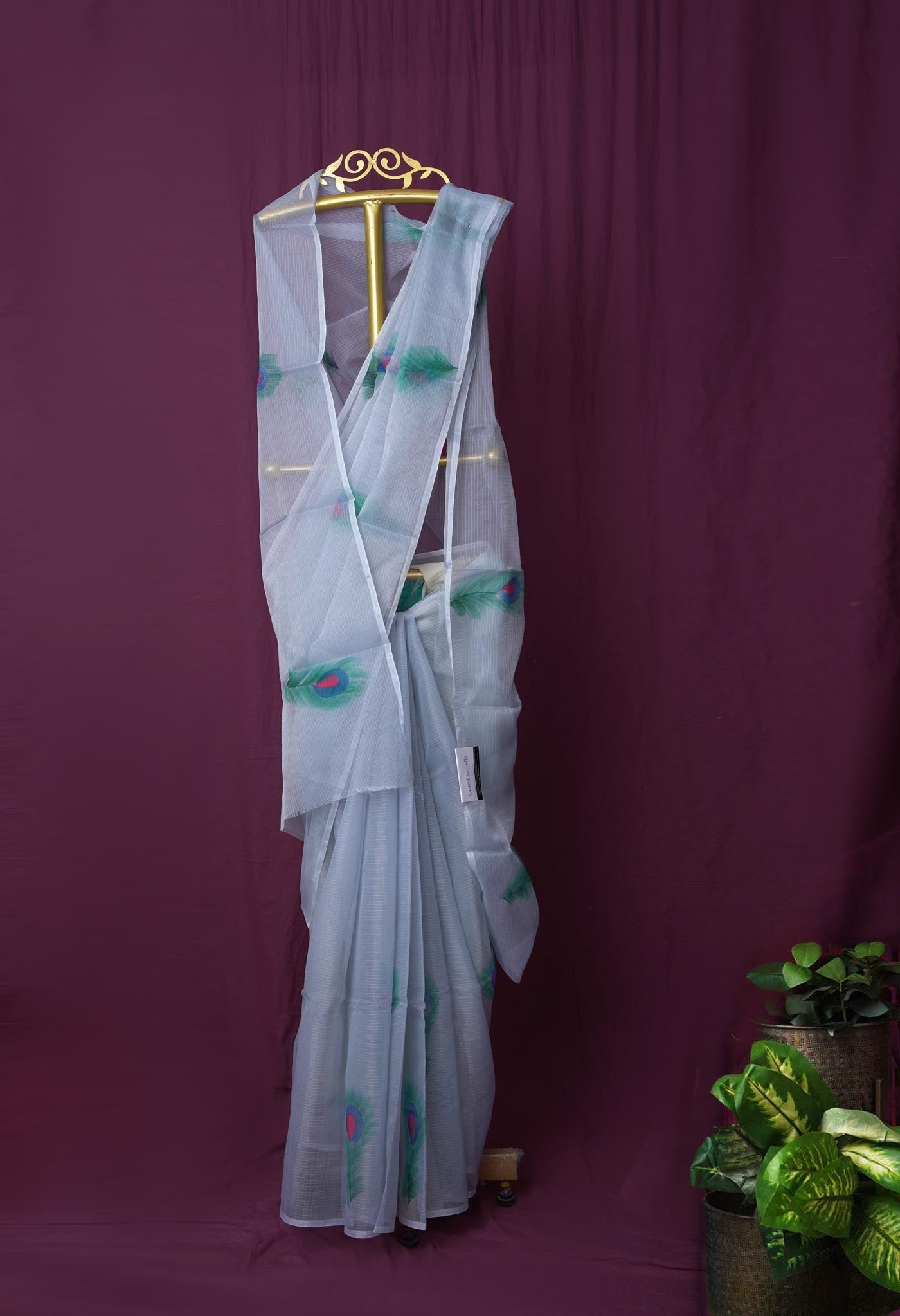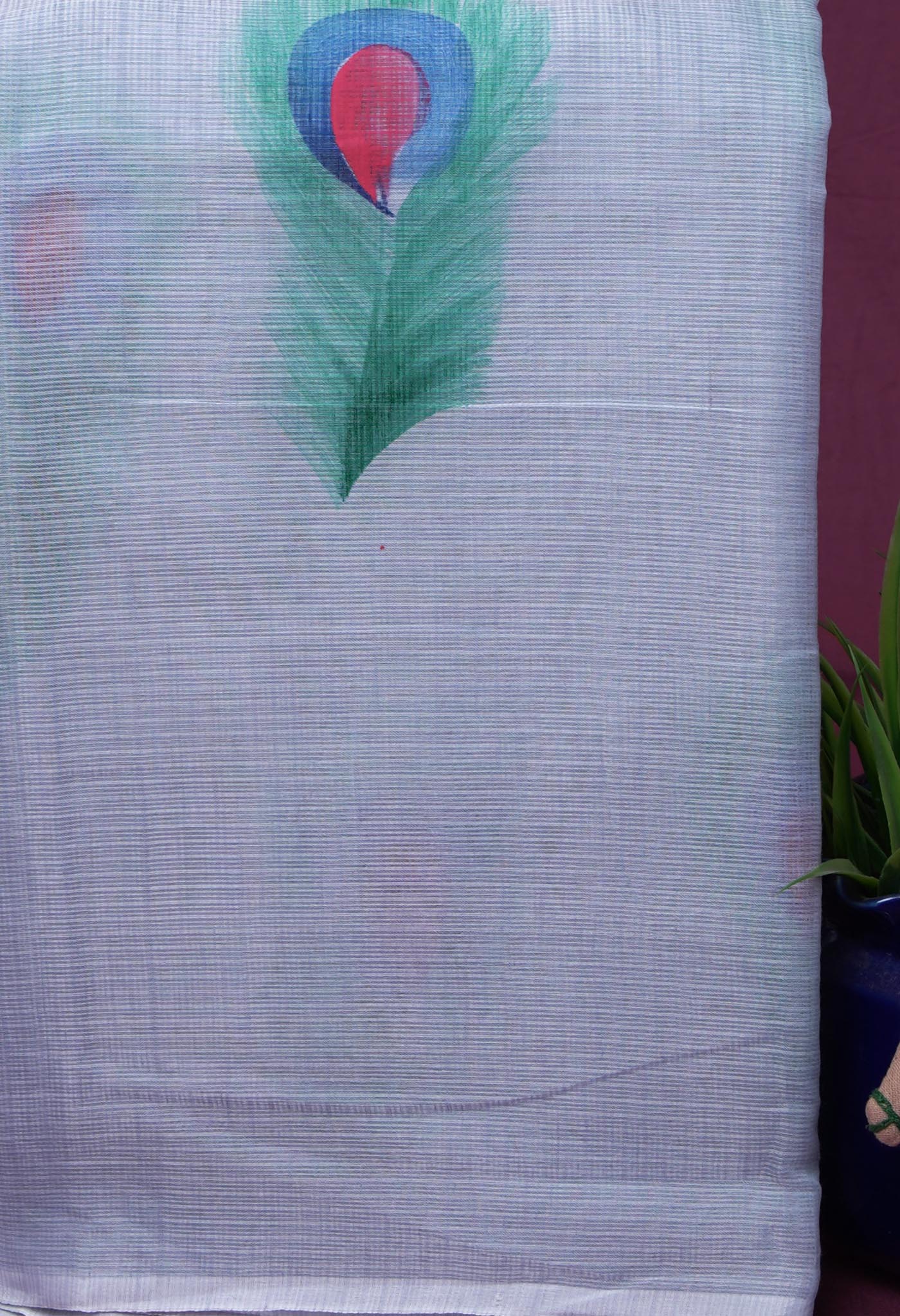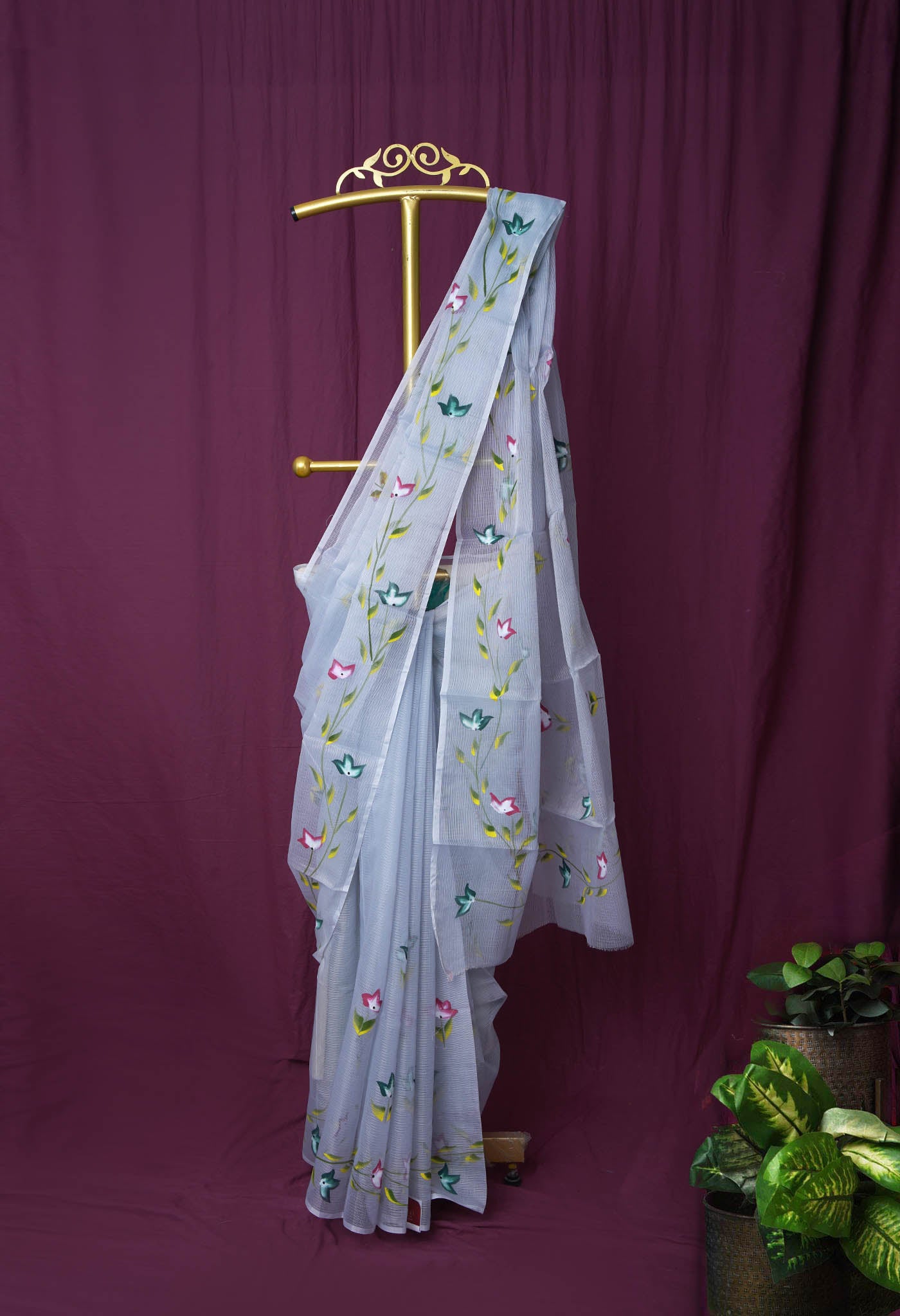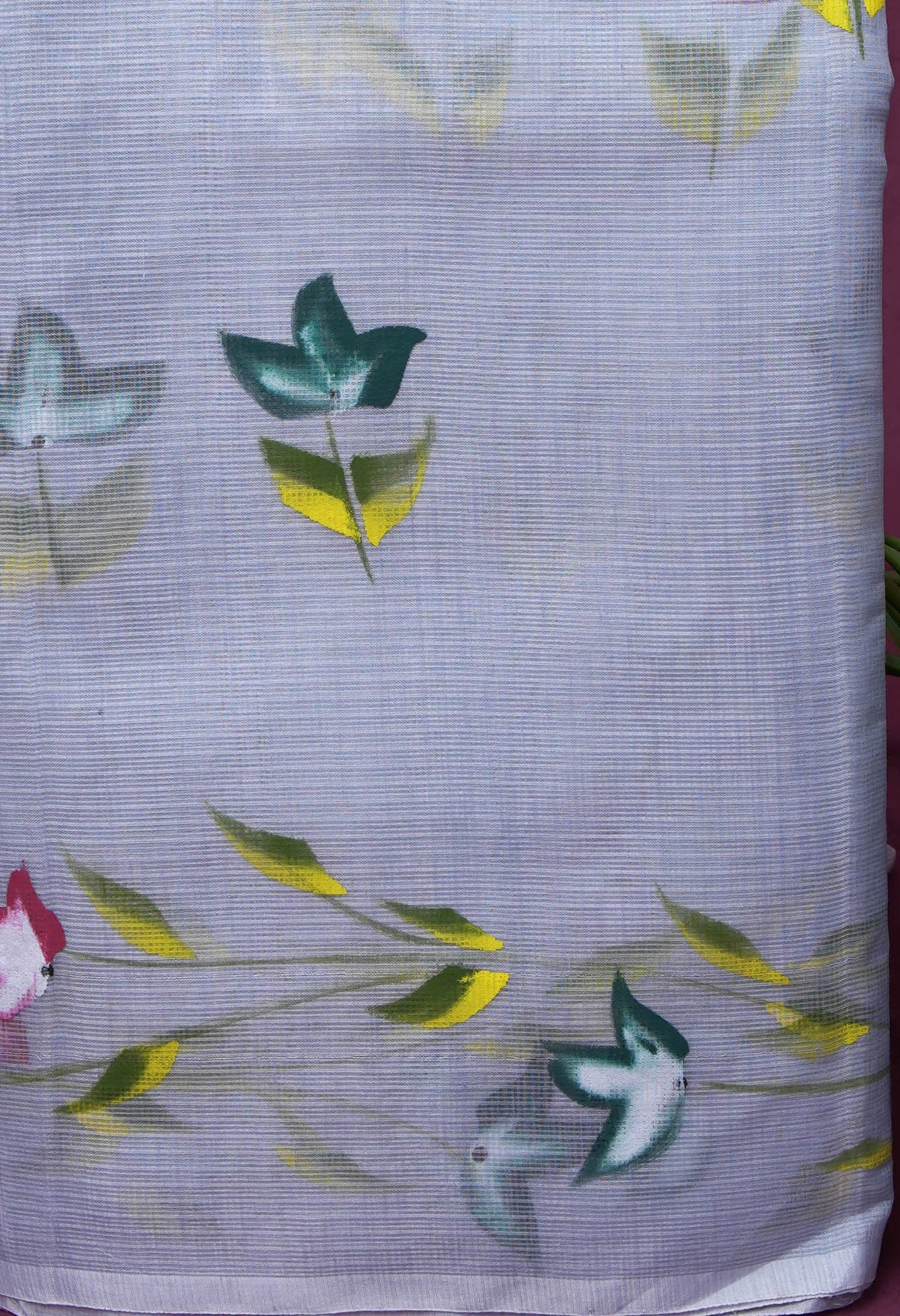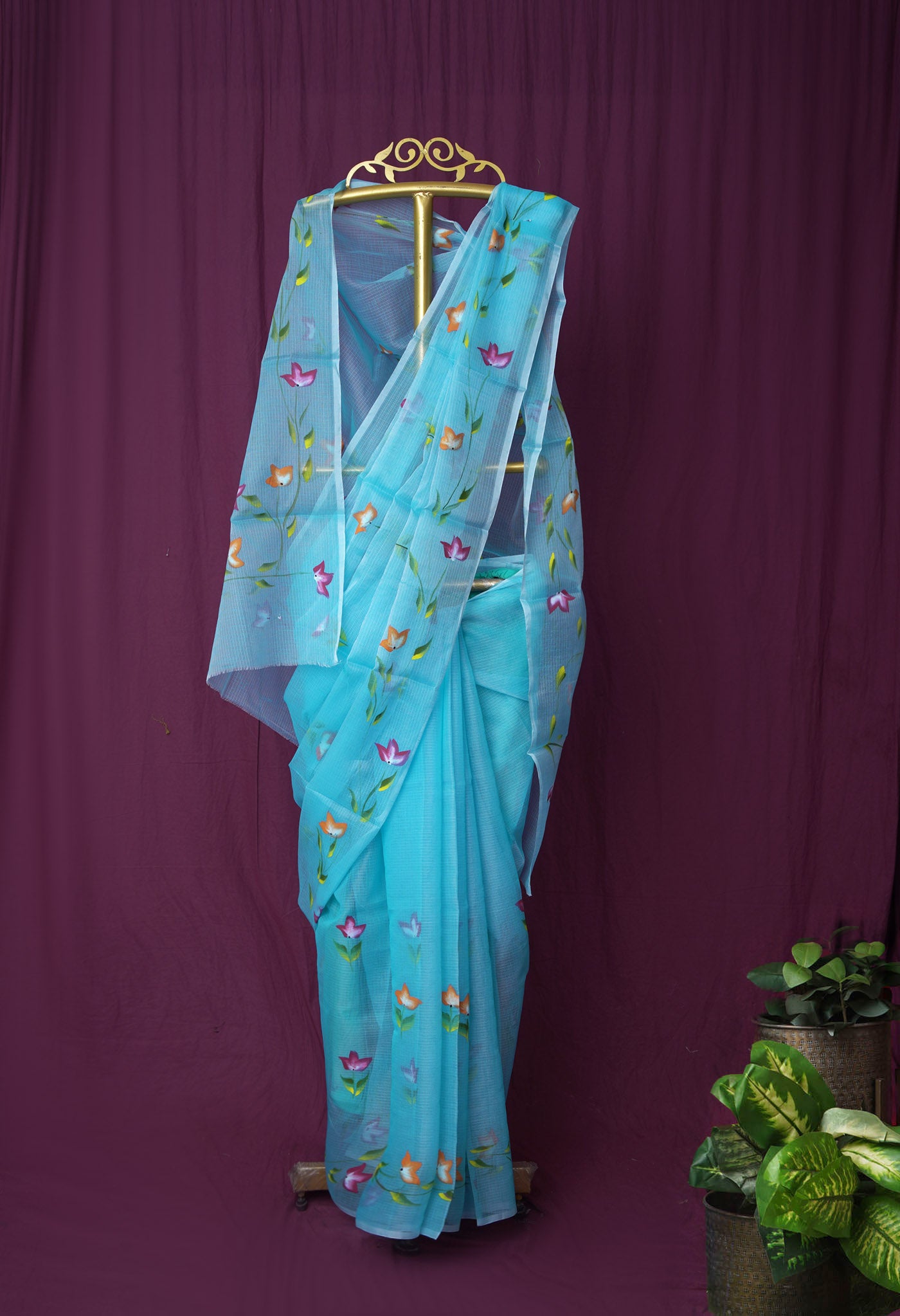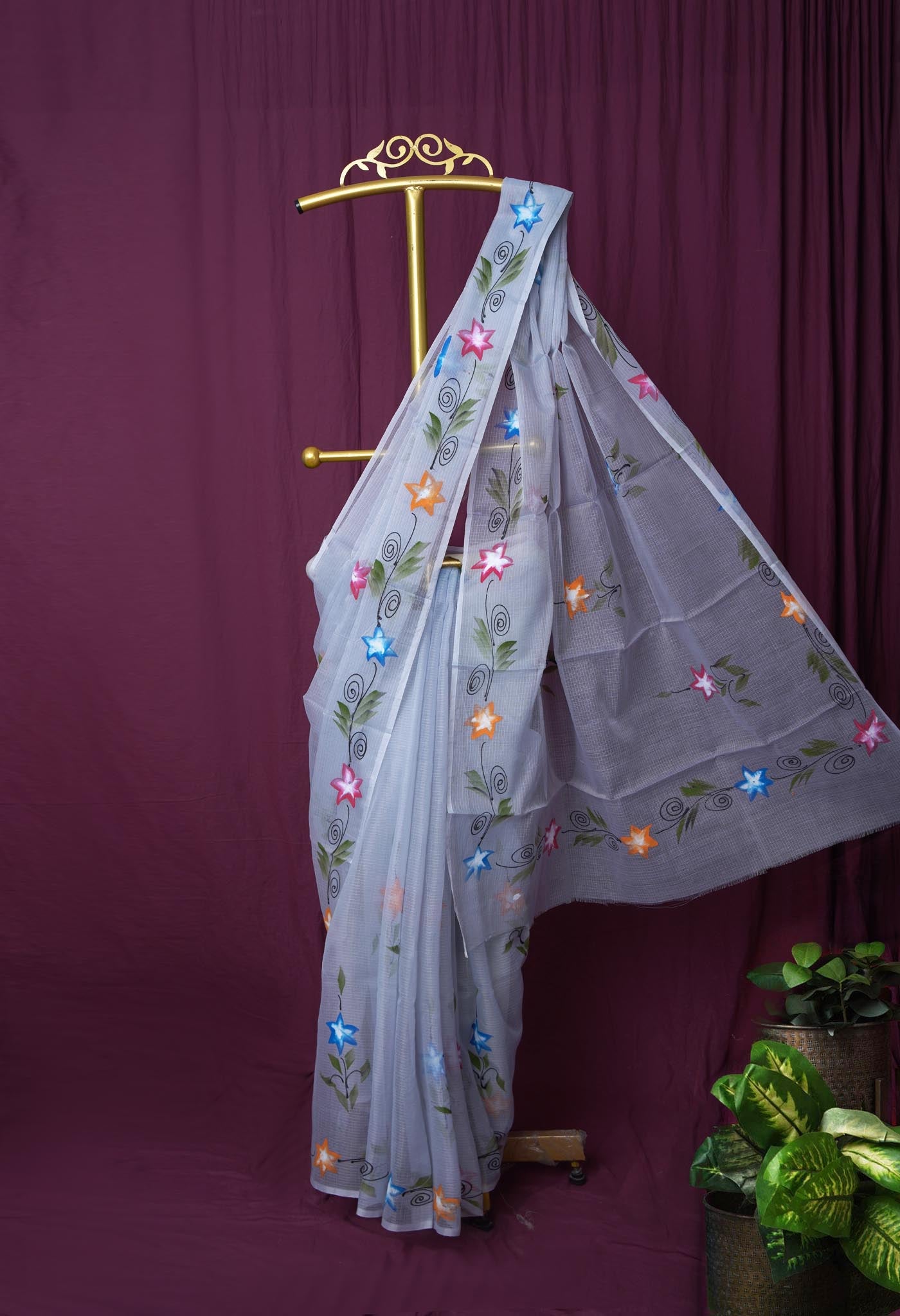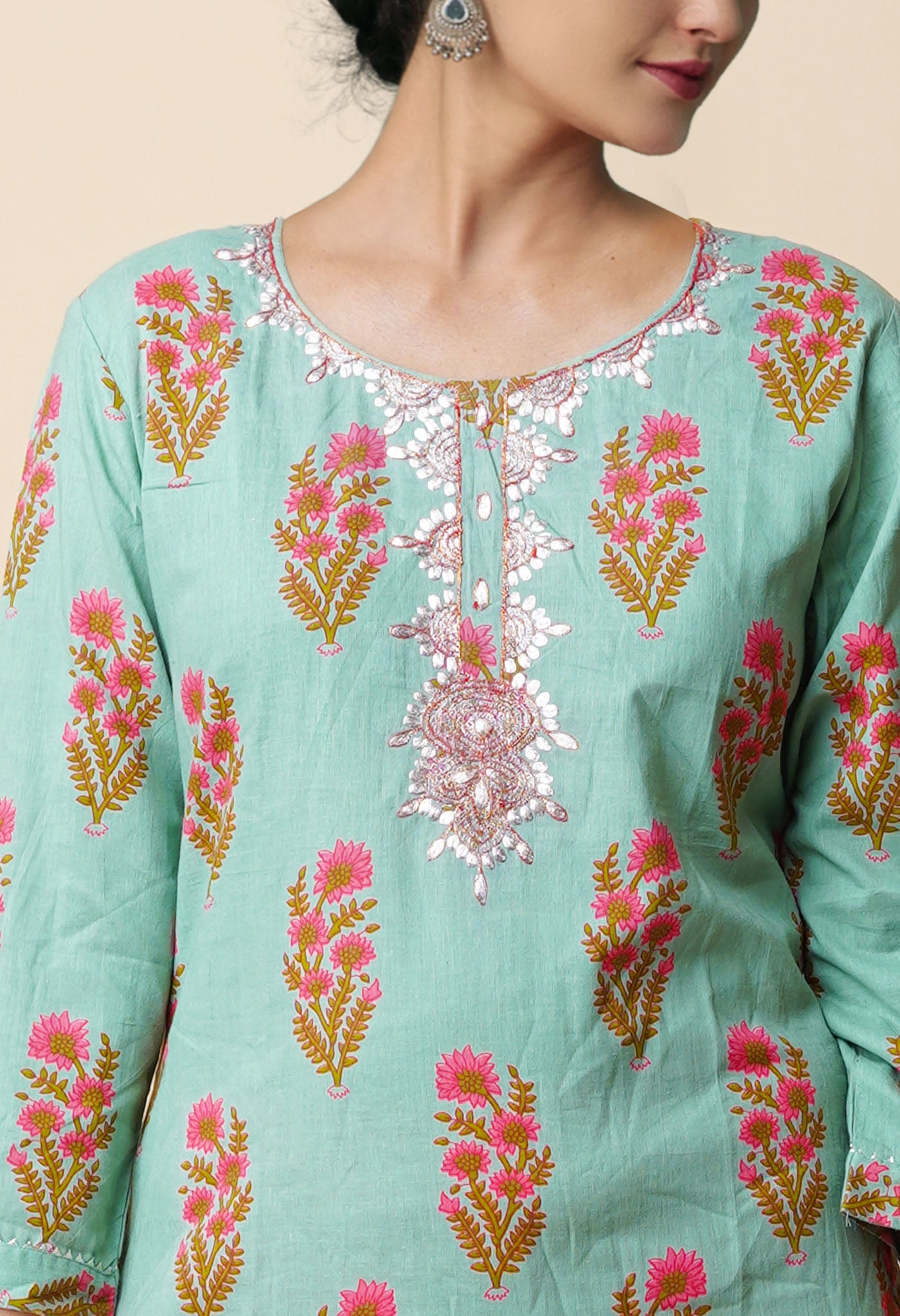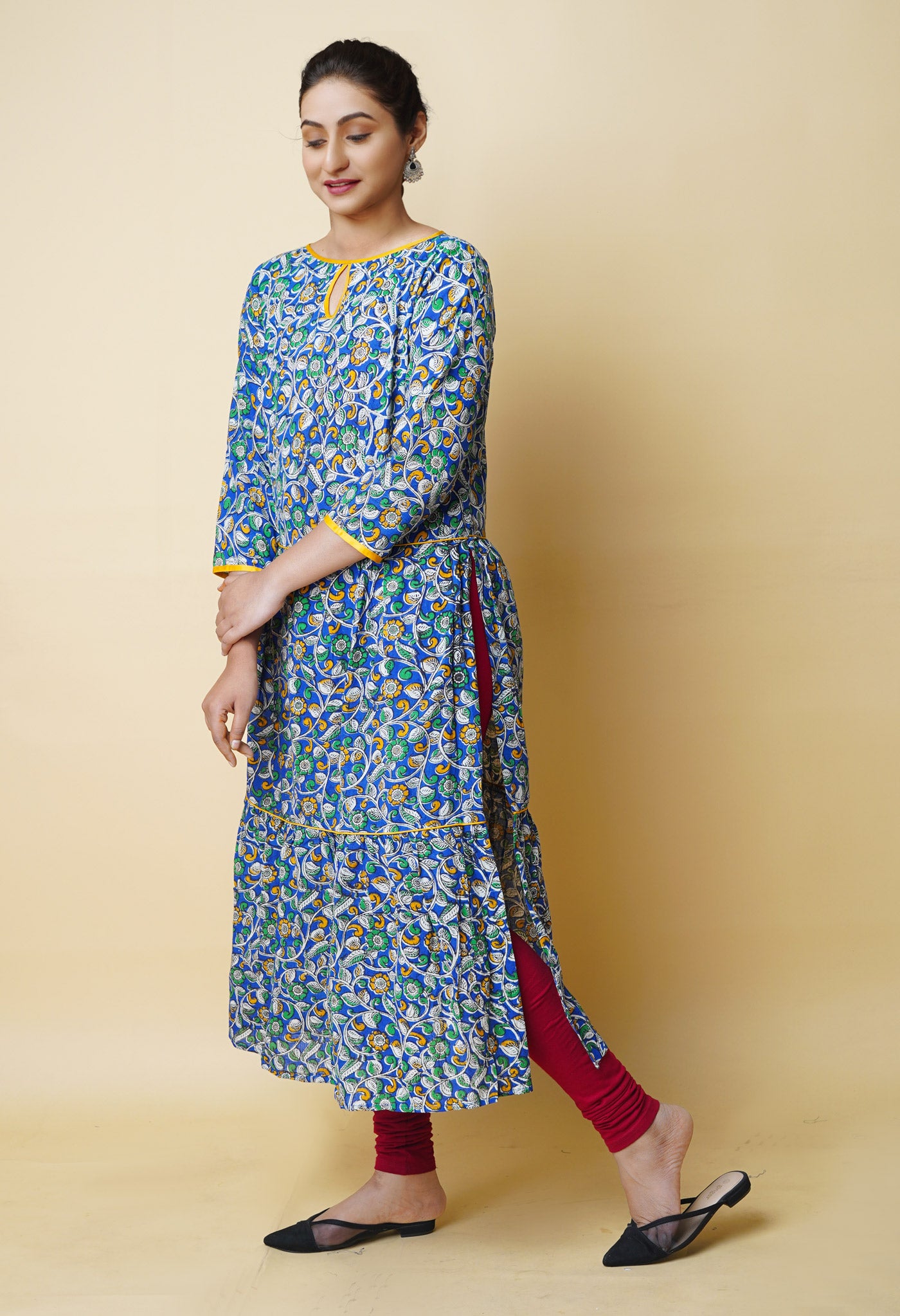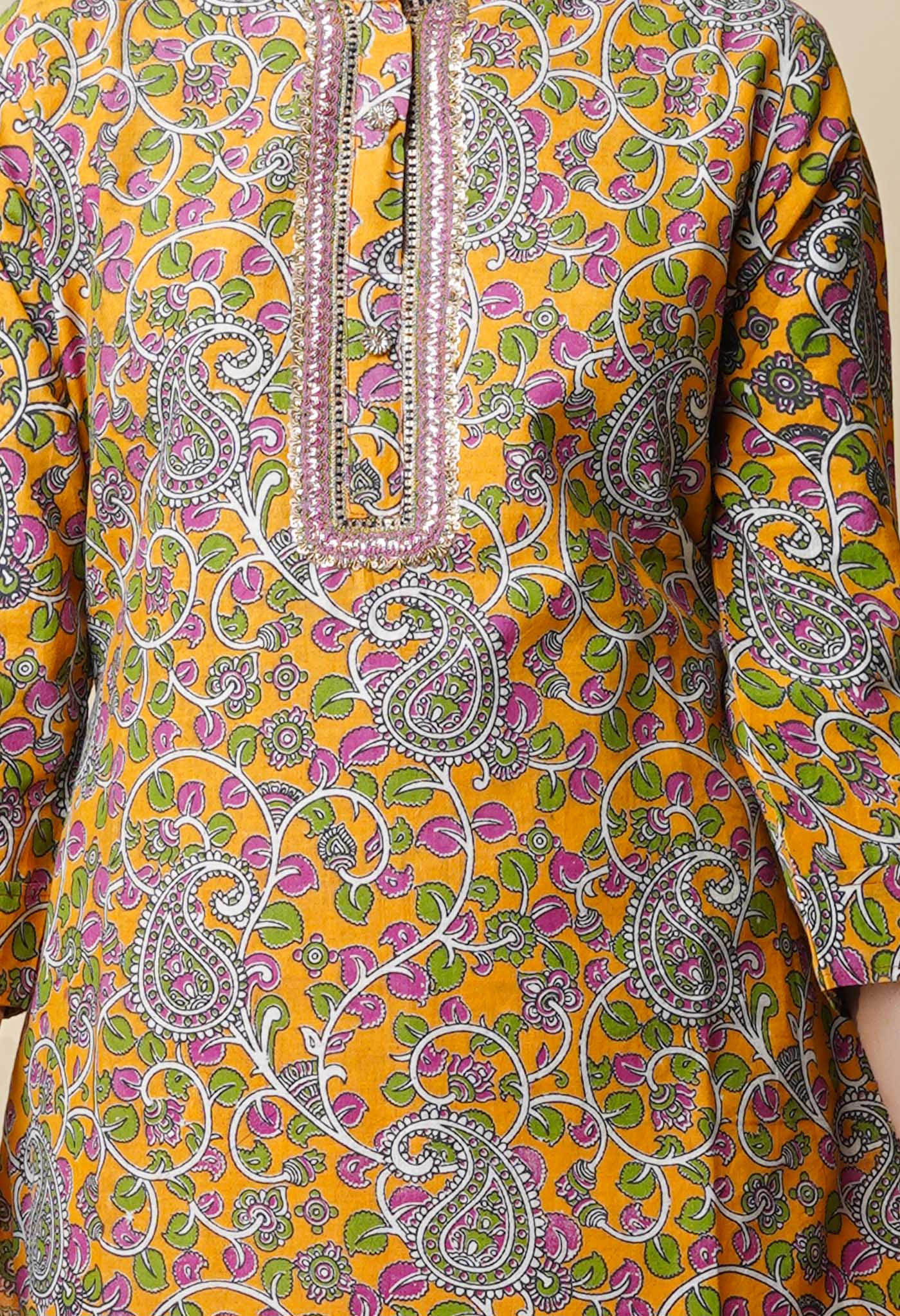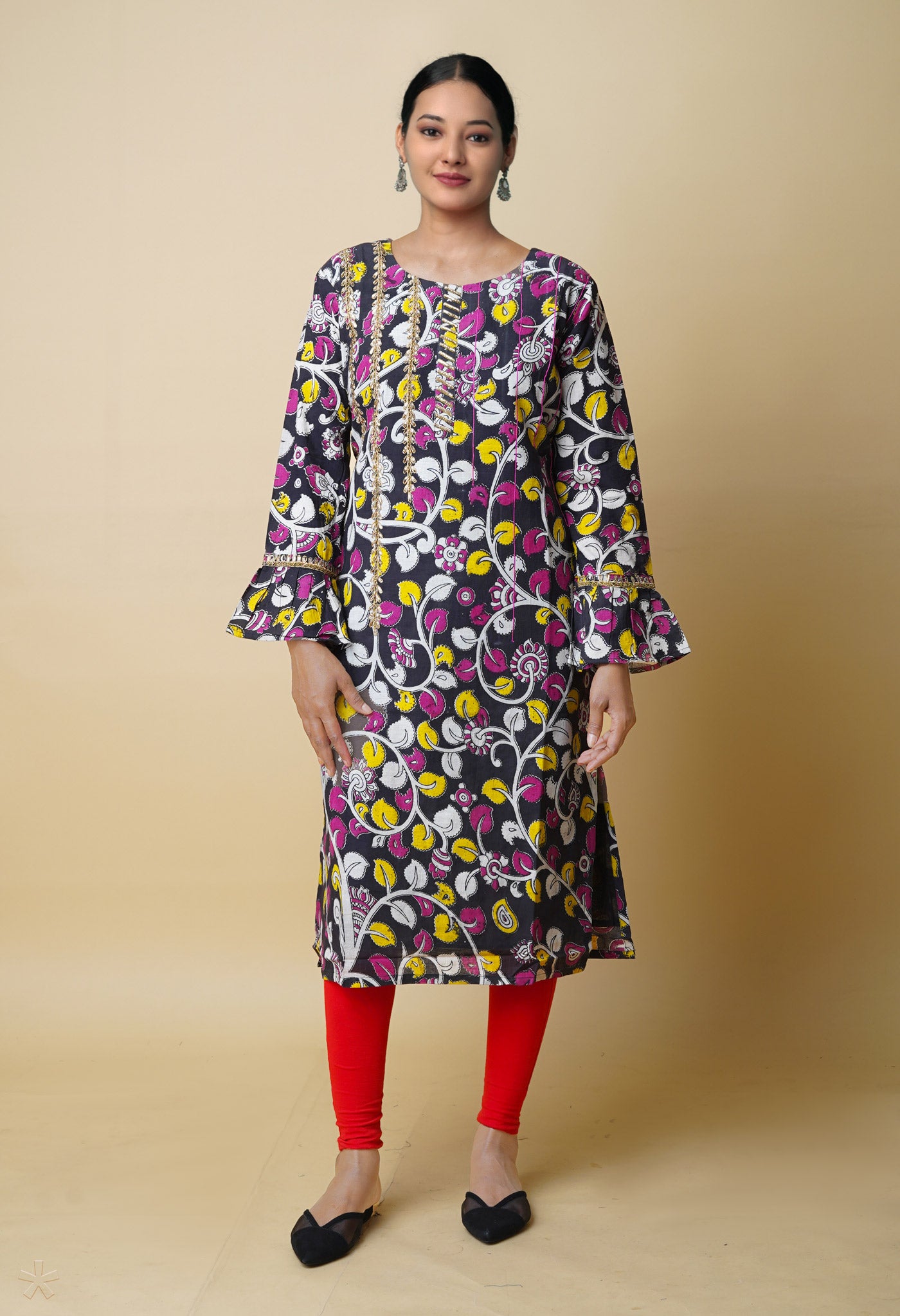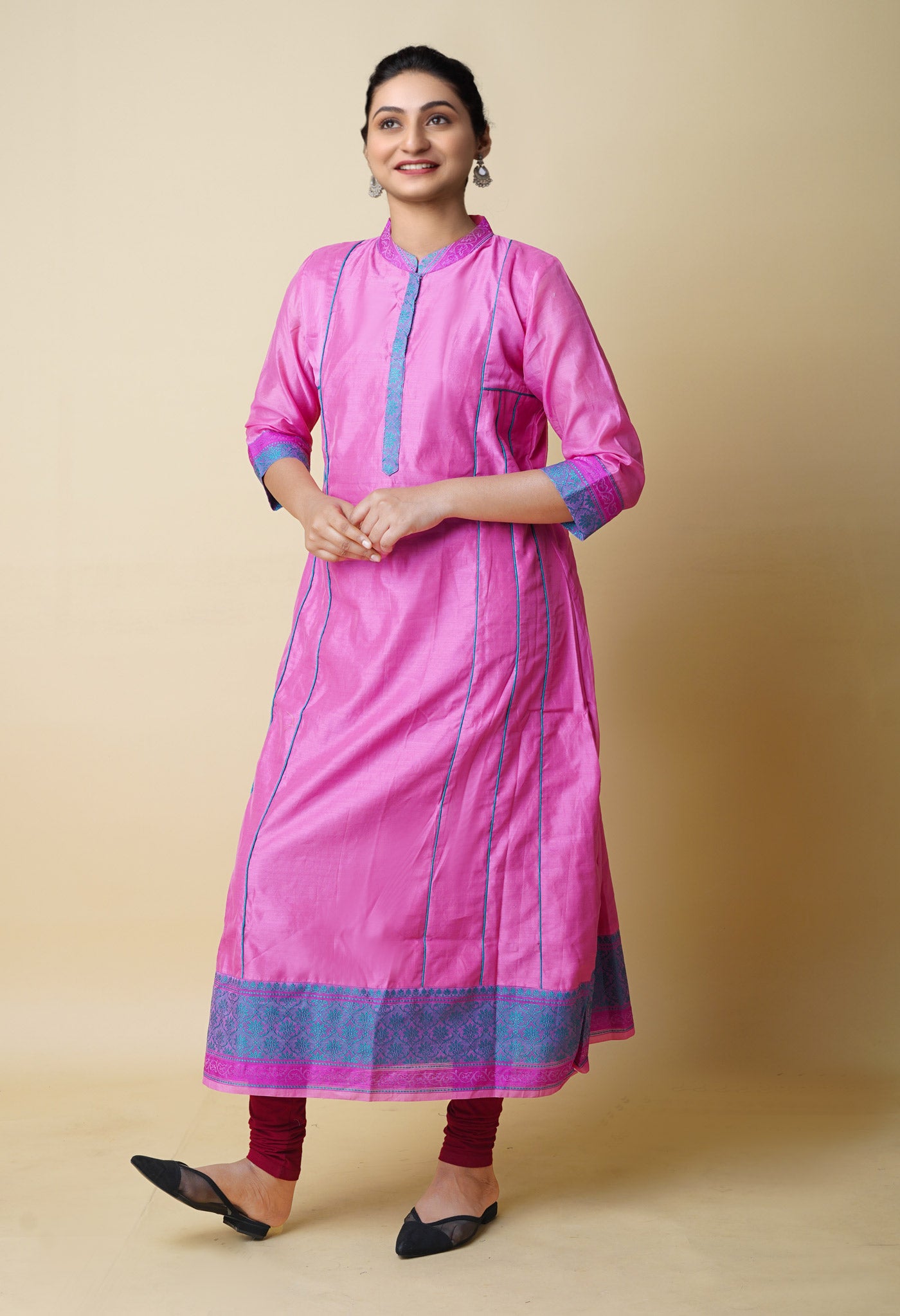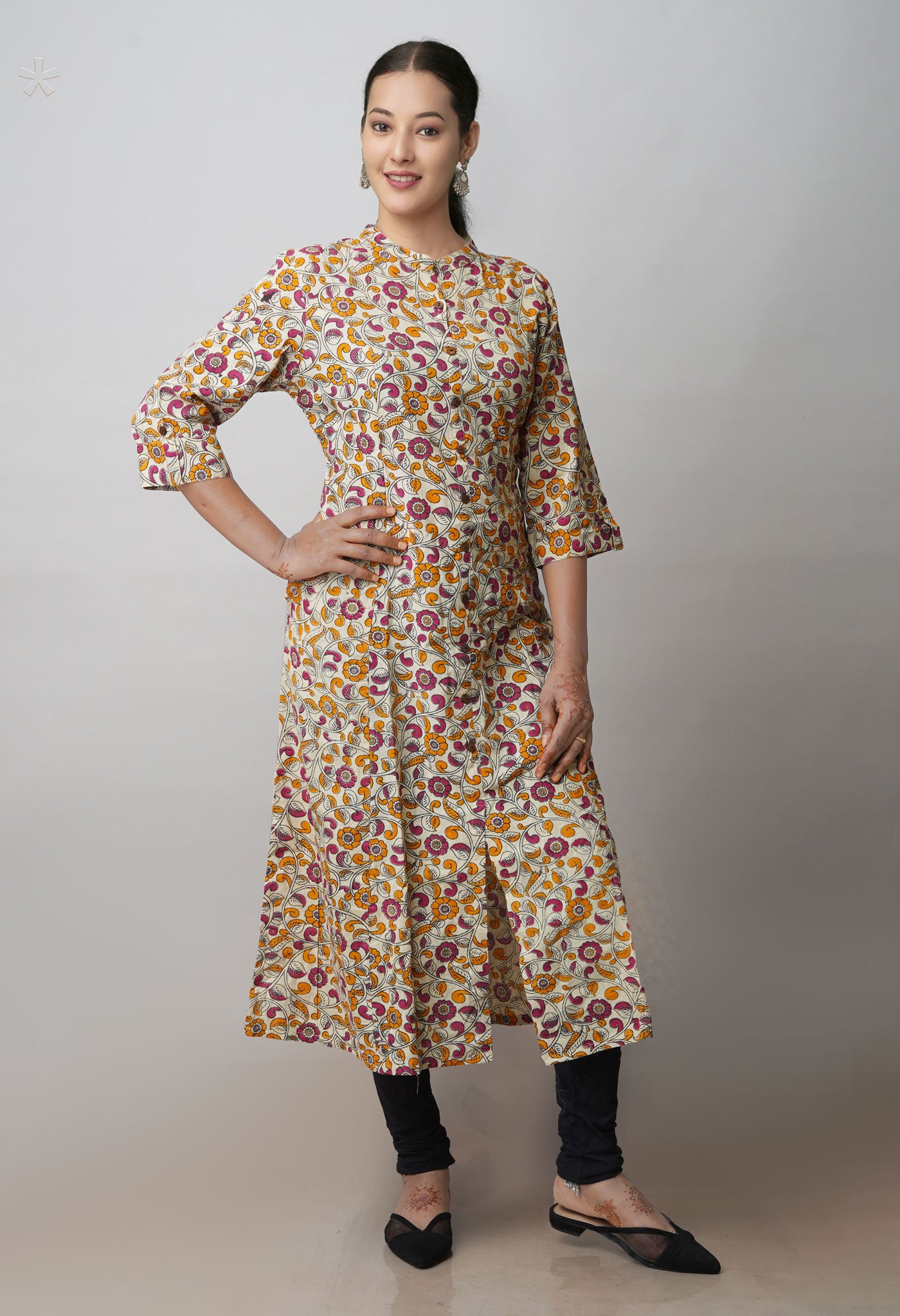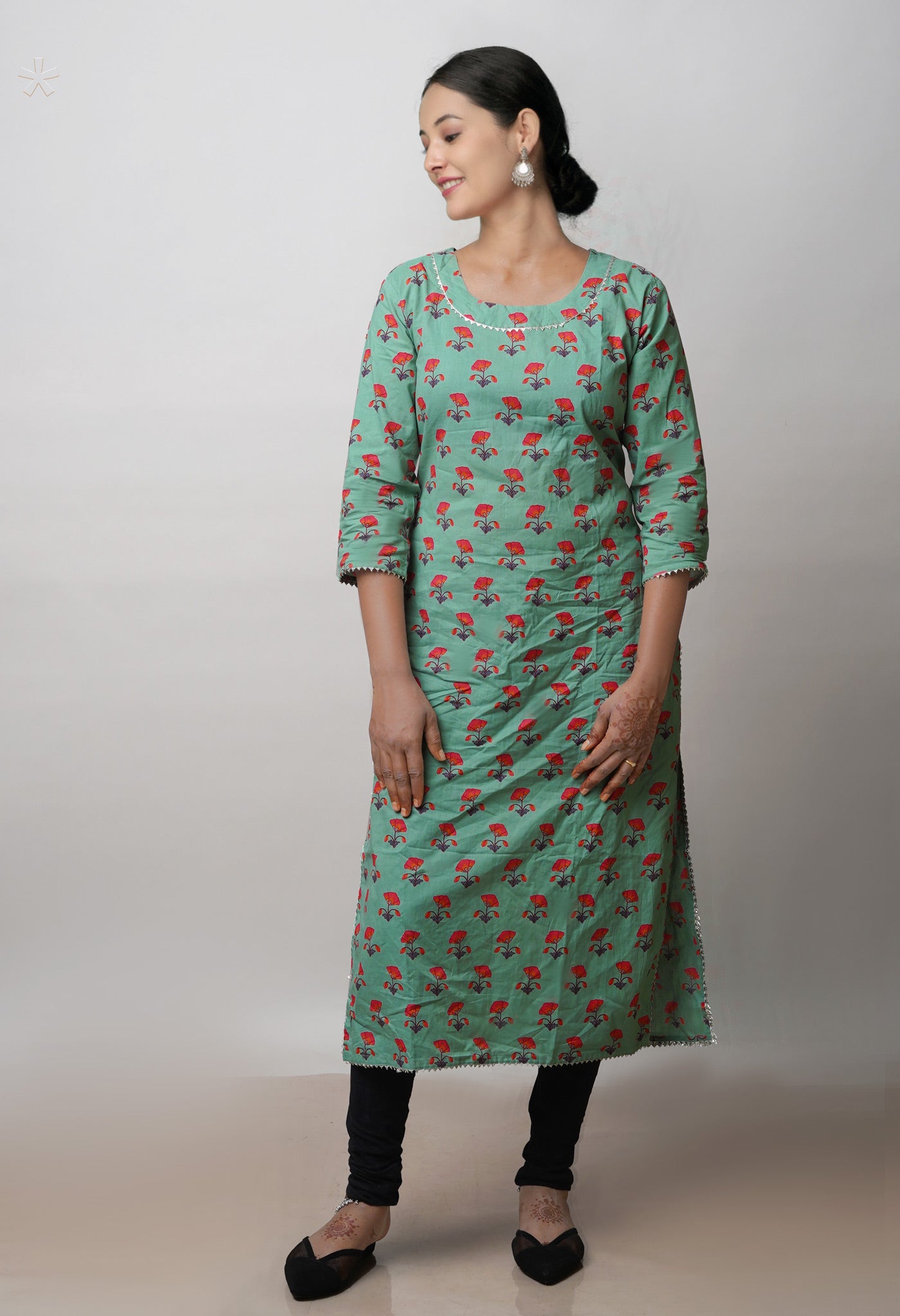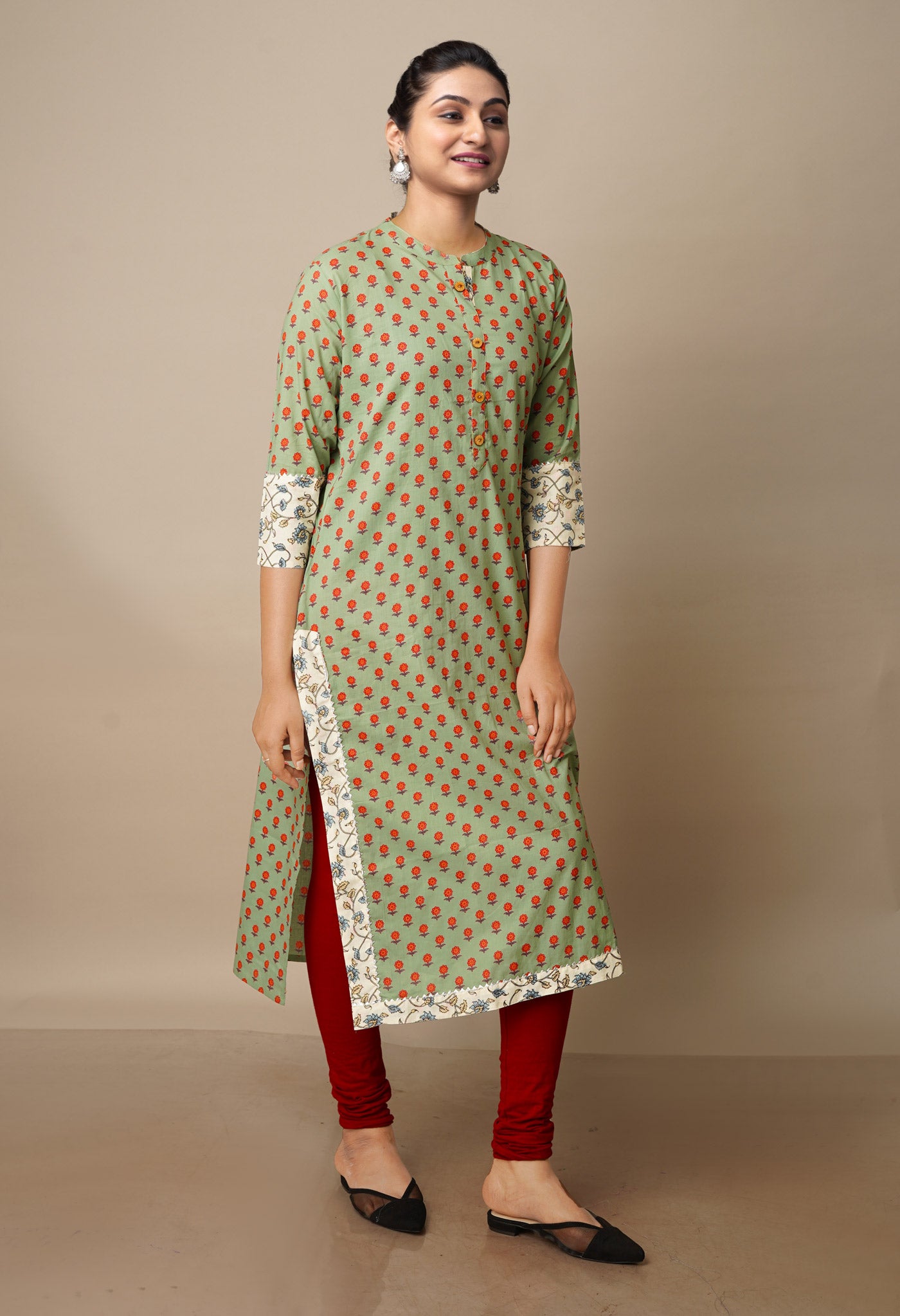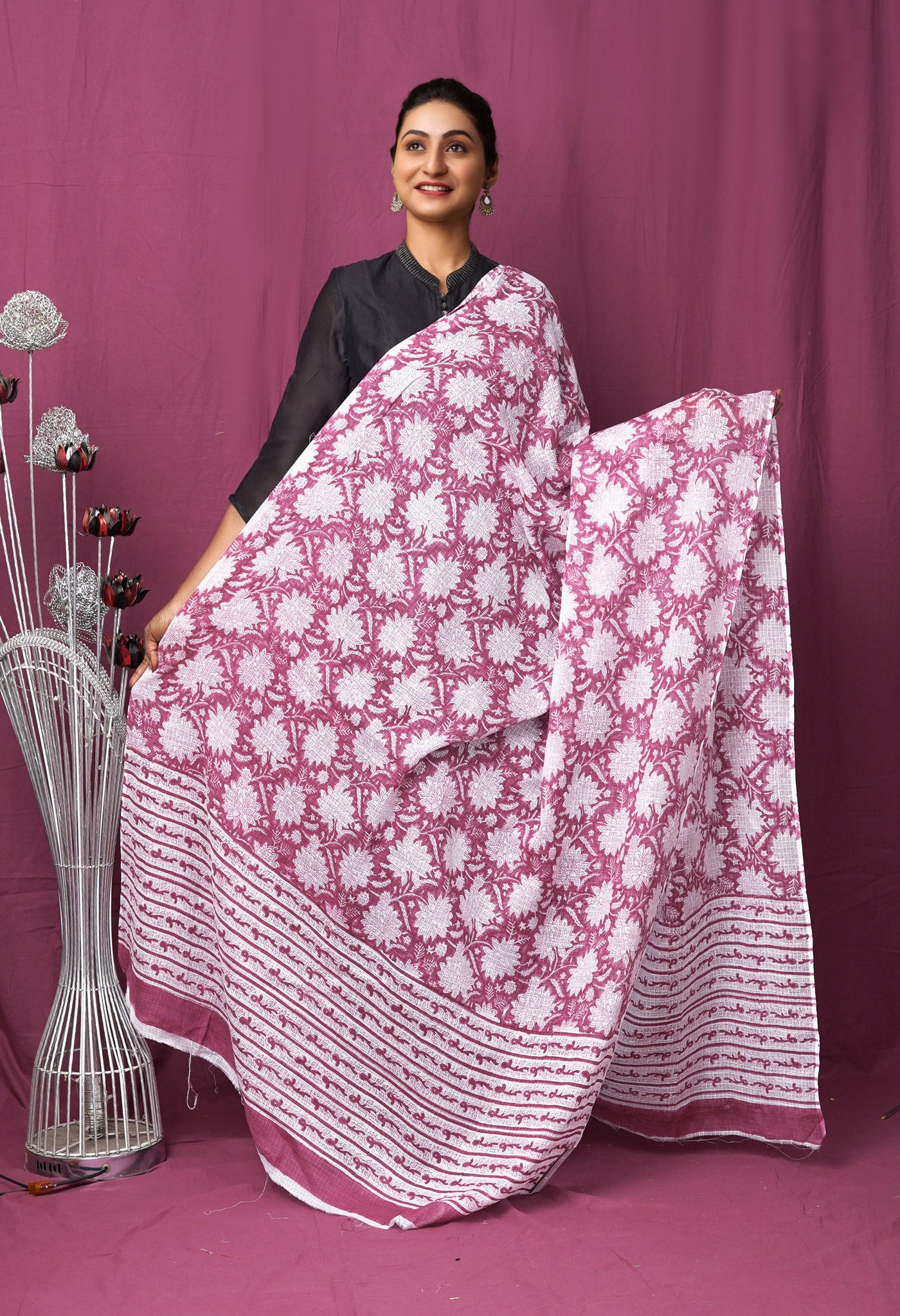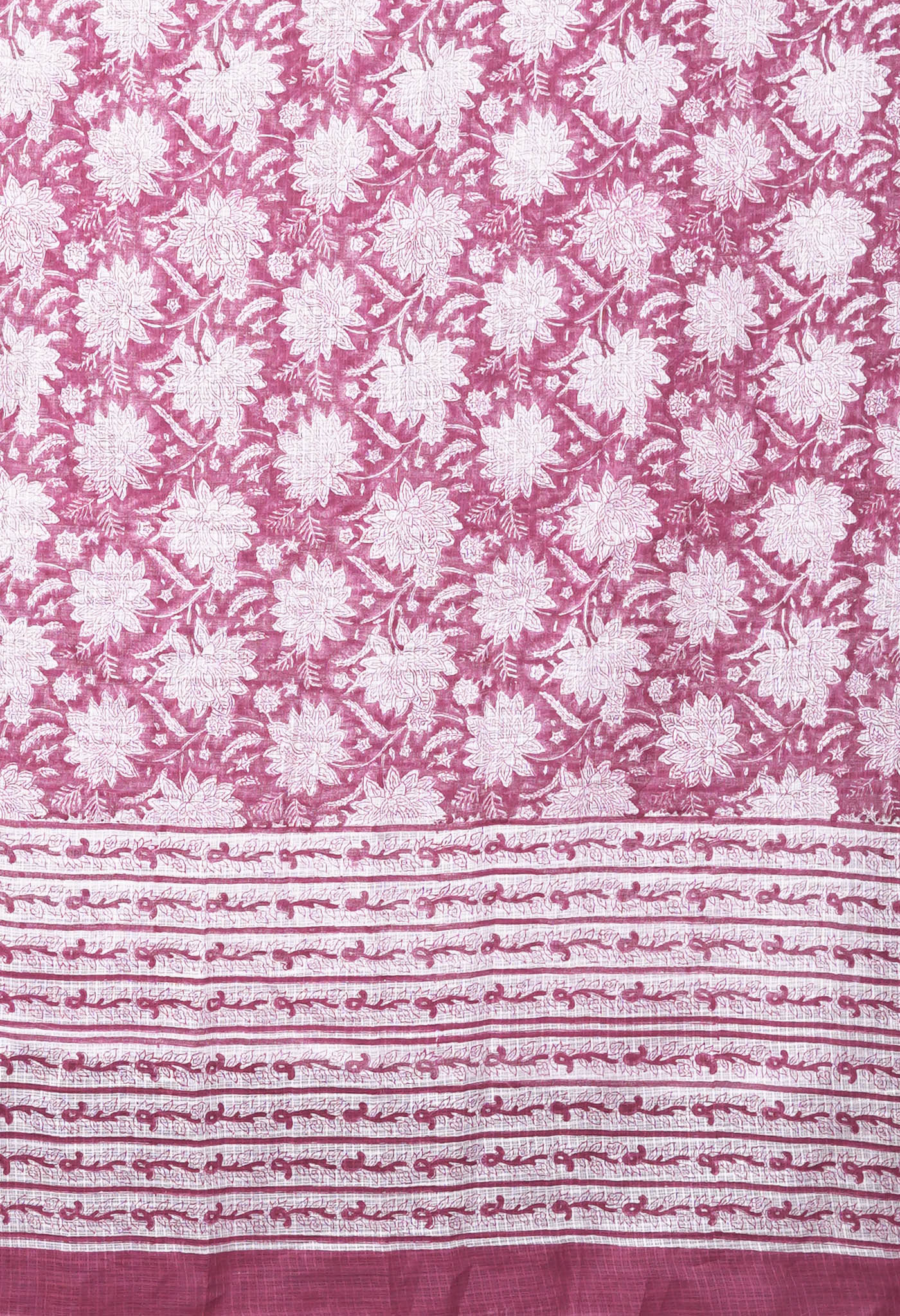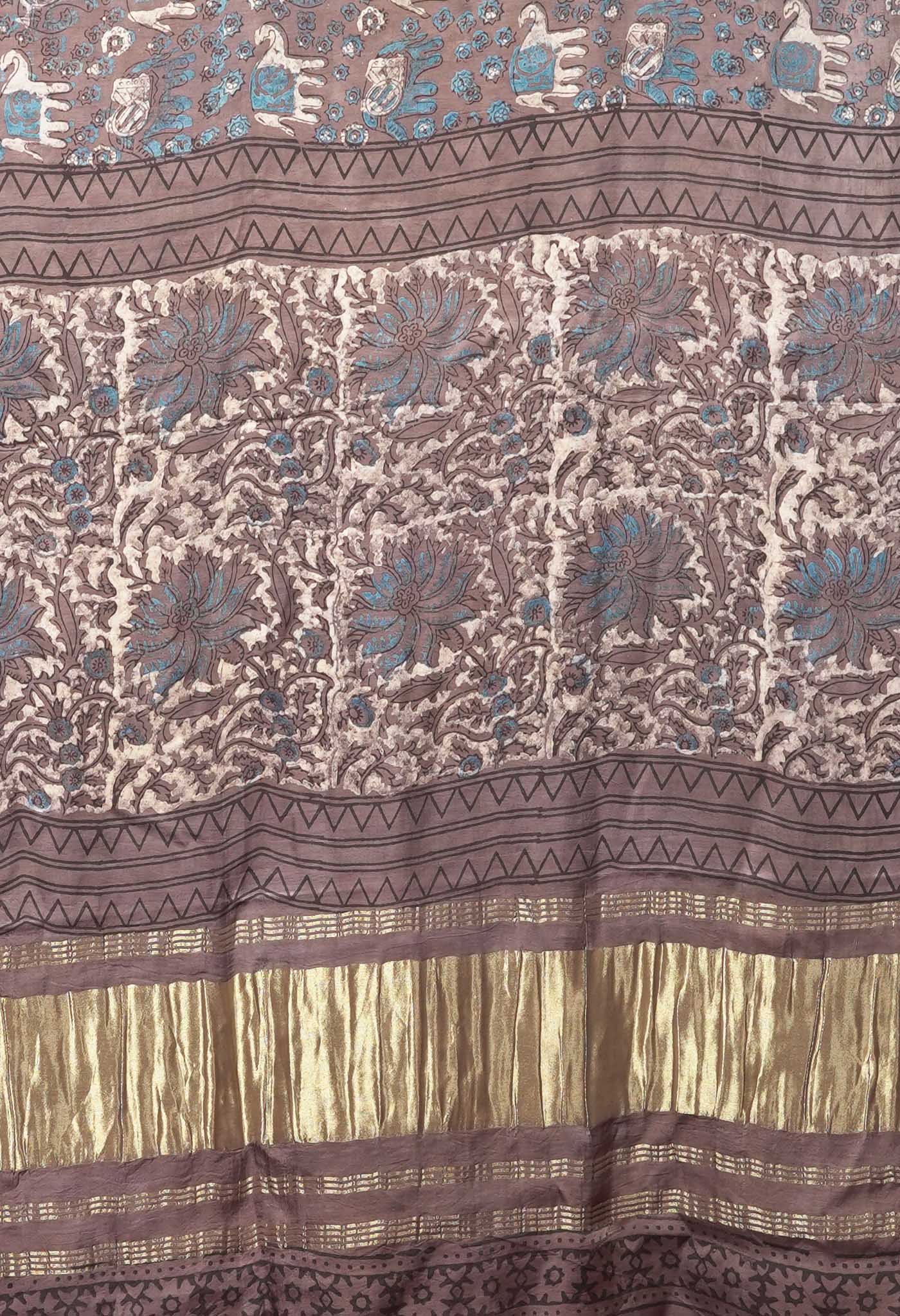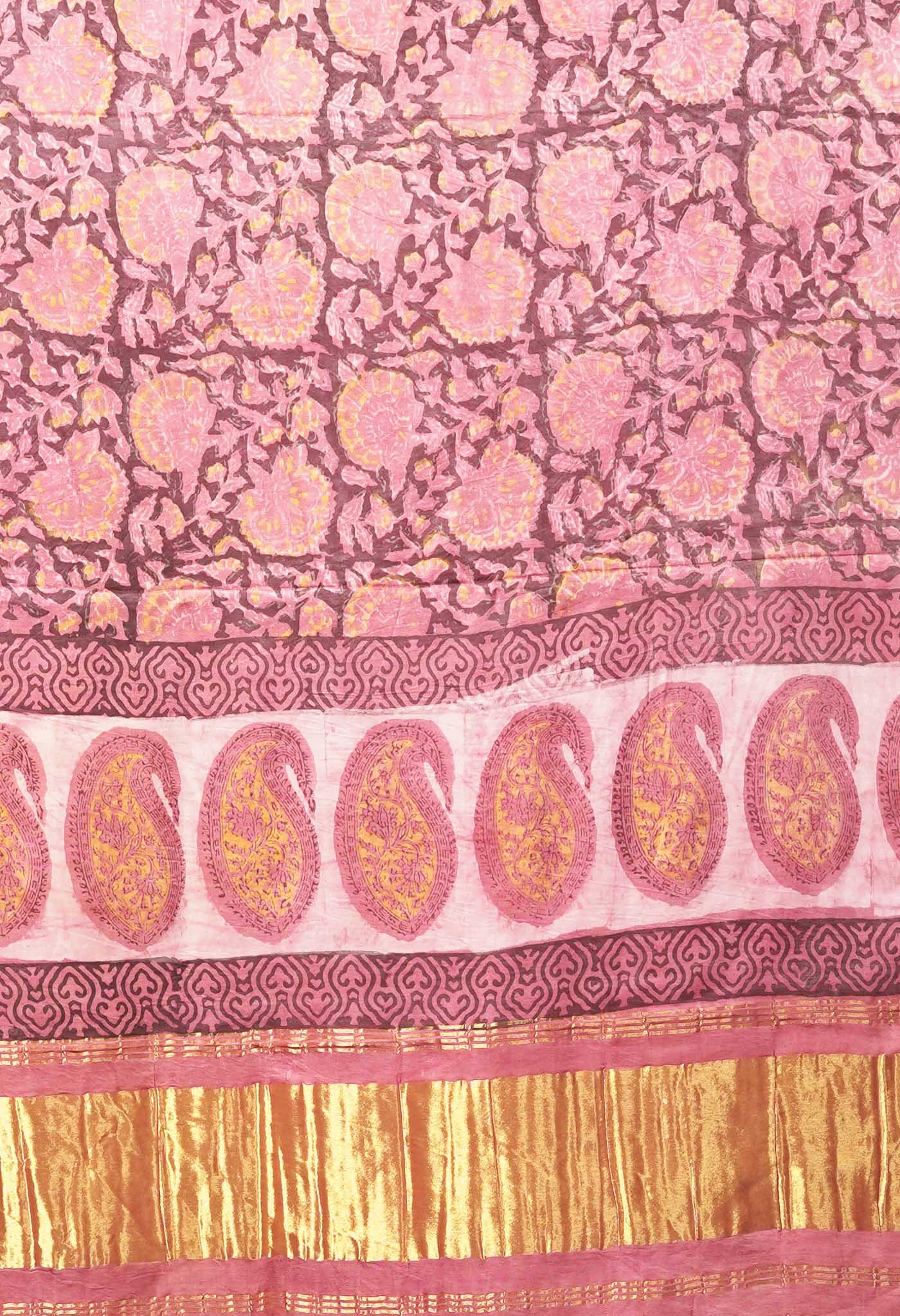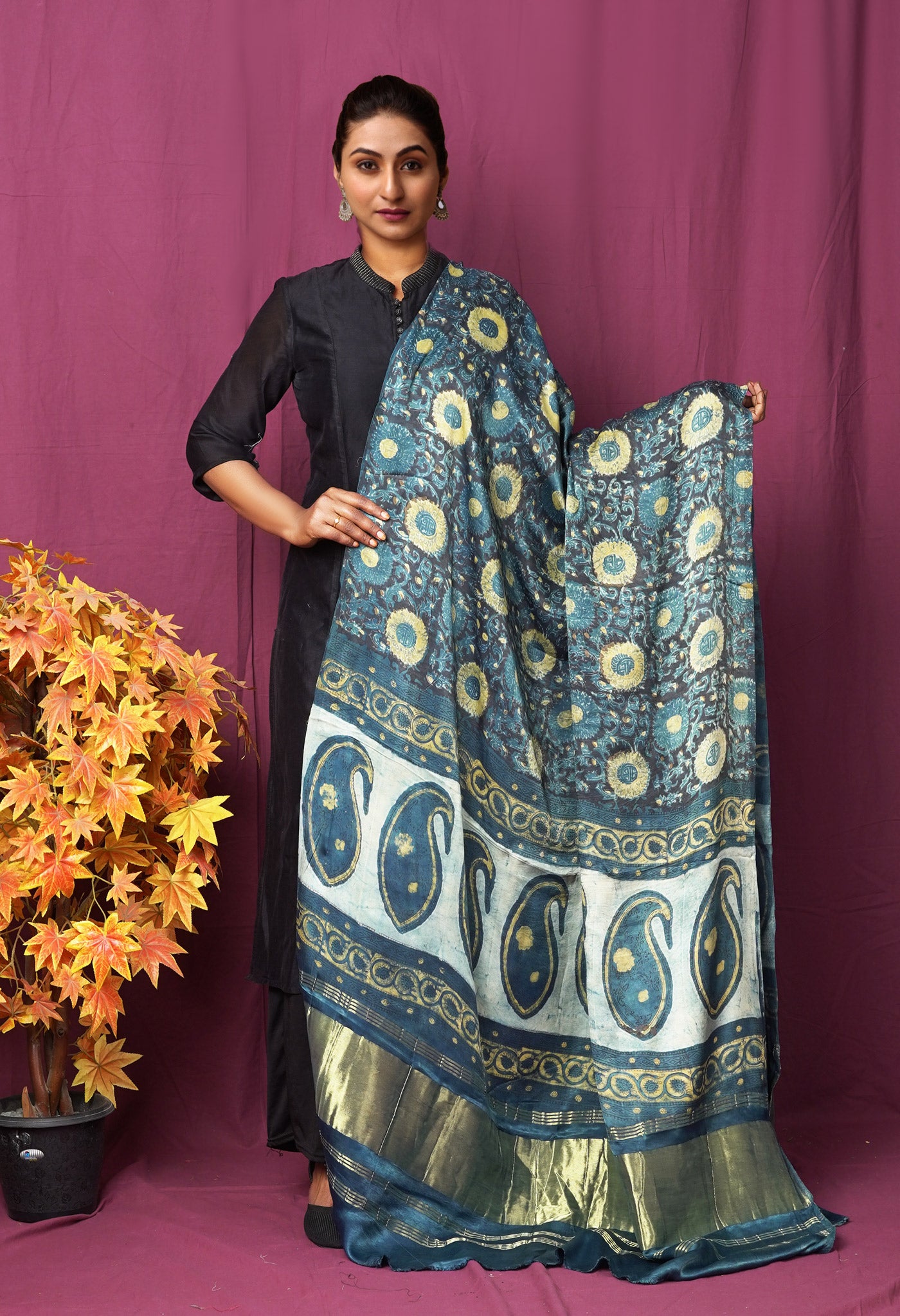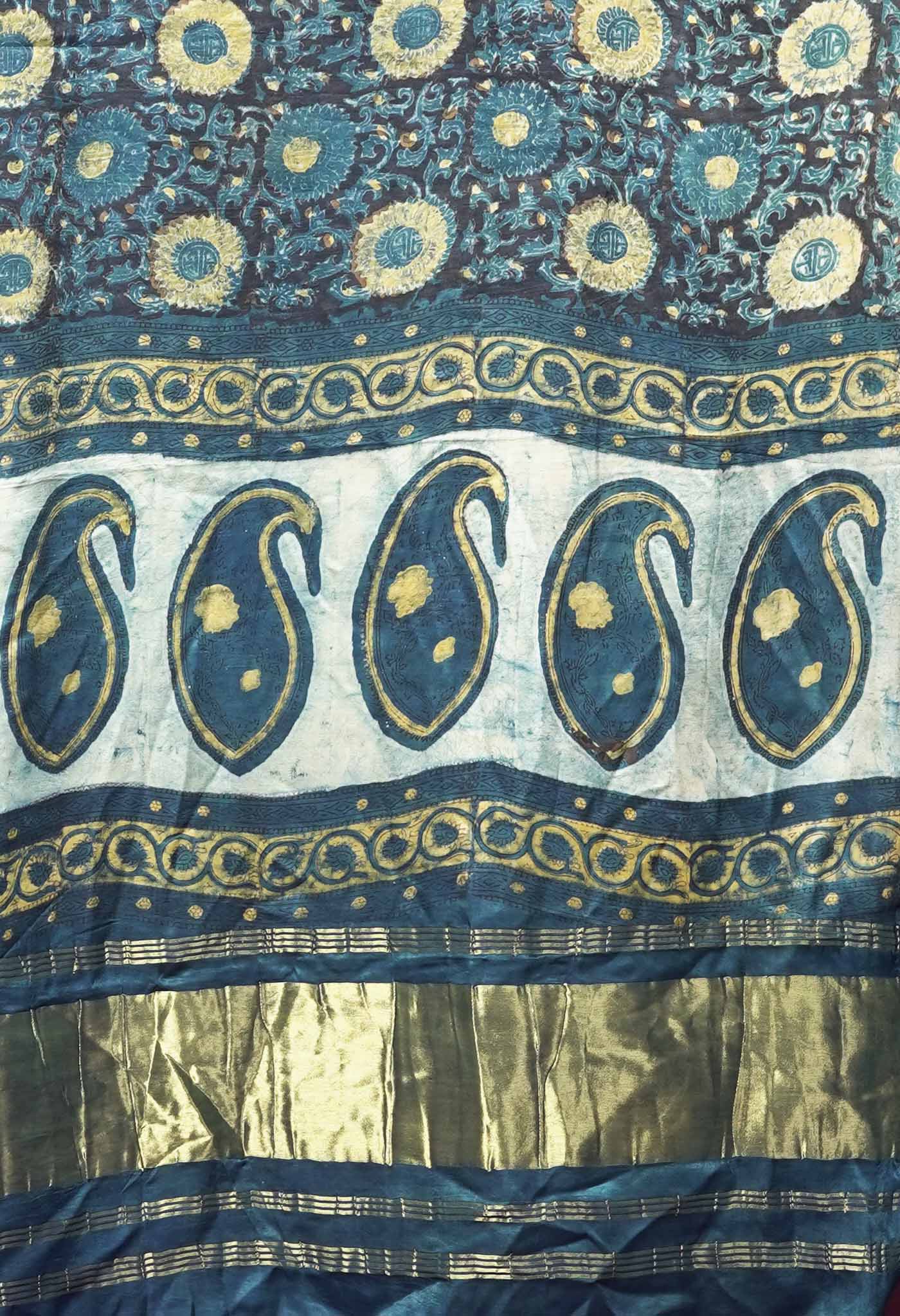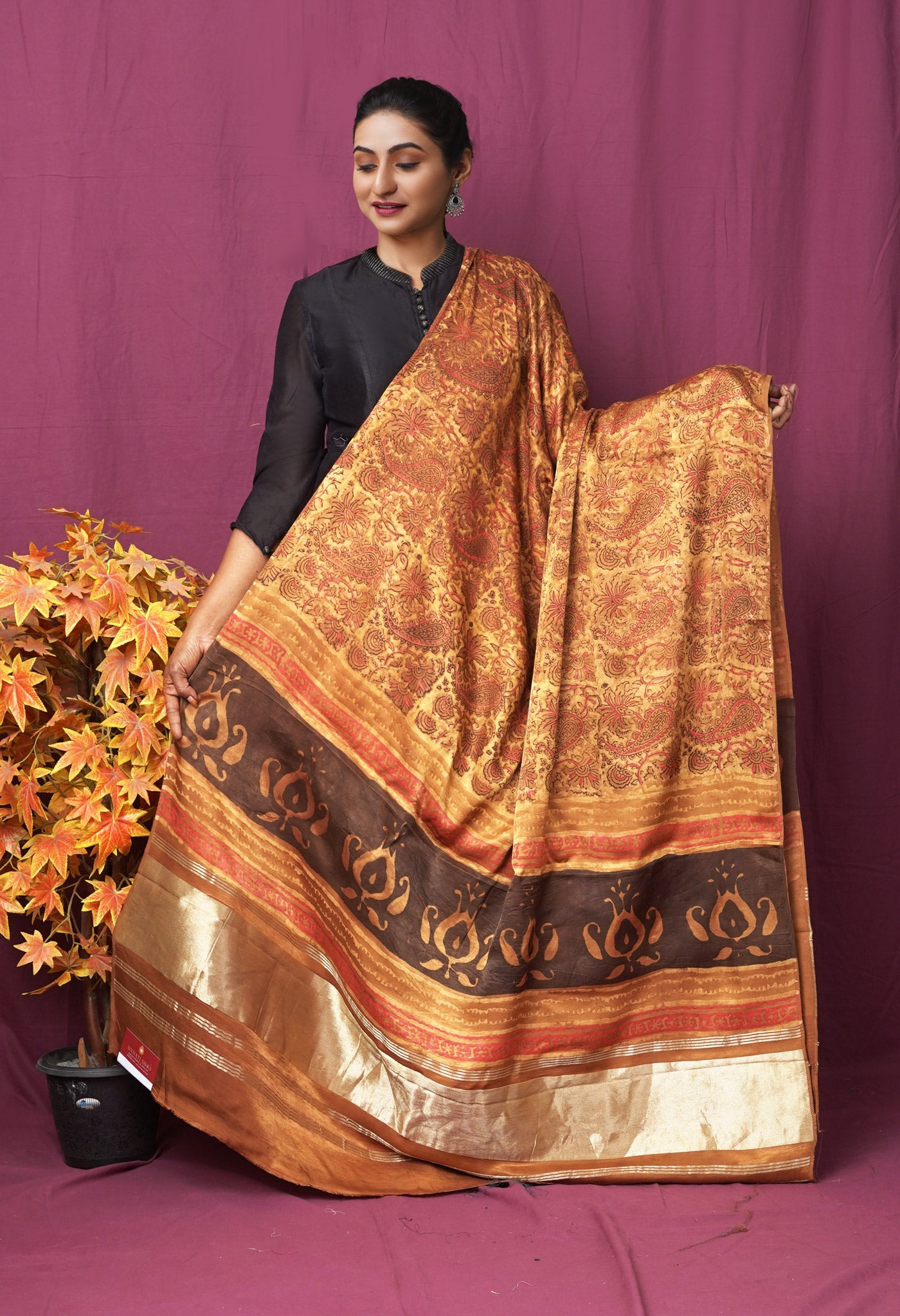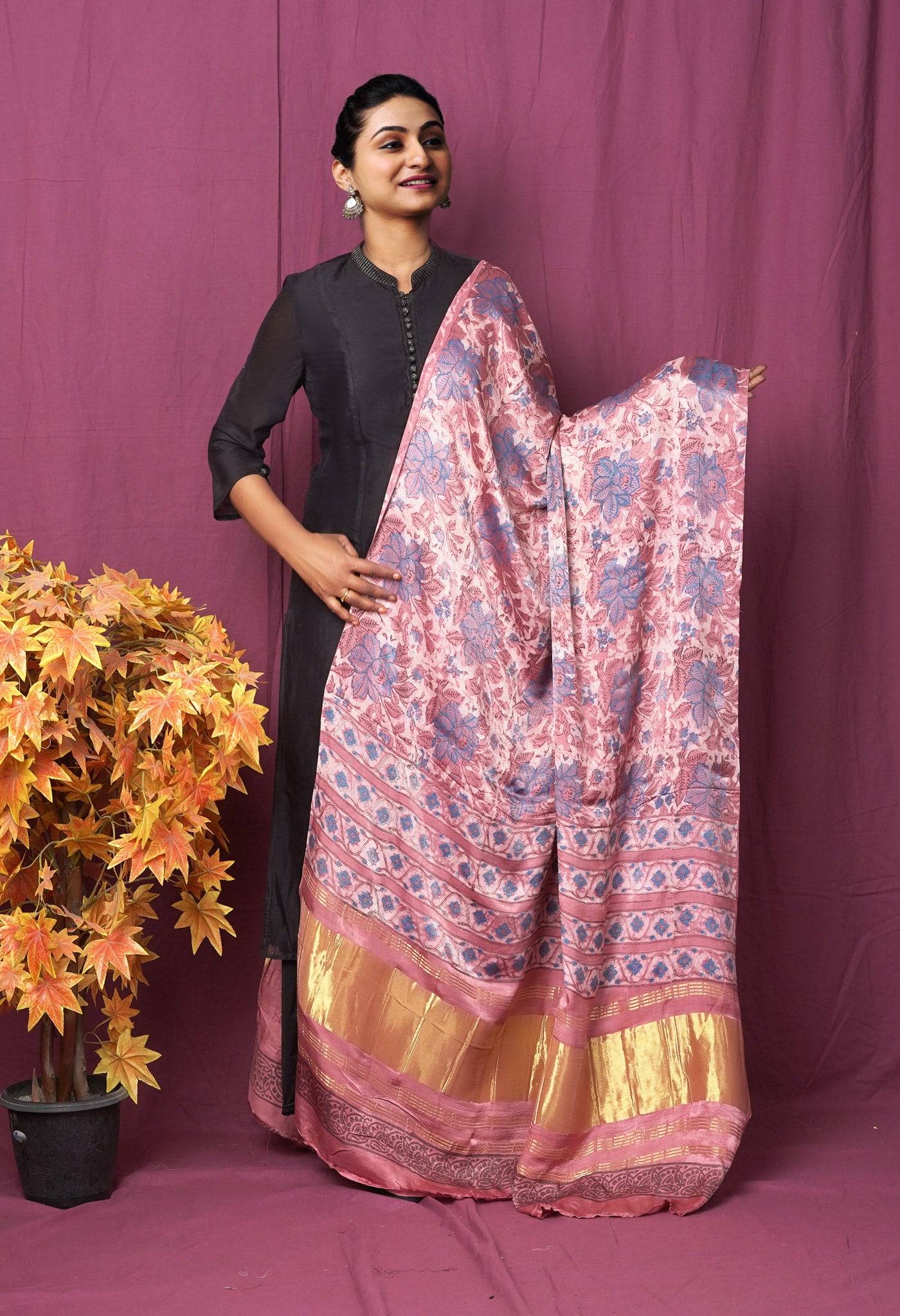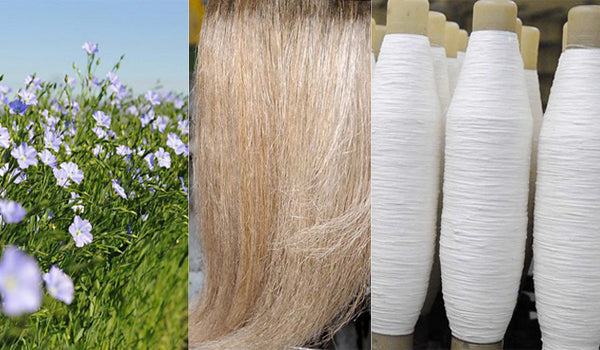
Indira Gandhi Krishi Vishvavidyalaya (IGKV) achieves a breakthrough in getting linen yarn using the flax plant
In 2017 when the Indira Gandhi Krishi Vishvavidyalaya (IGKV) announced its achievement of being able to use the stem of the flax plant to obtain linen yarn, it was seen as a major breakthrough that could bring about a textile revolution in the country. Linen till now has been majorly imported for our linen textiles.

The process till now
All that is needed to turn flax fiber into linen, and then spin and weave the linen fibers into linen fabric is the cellulose flax fiber from the stem of the flax plant. The process for separating the fibers from the woody stalk can use either water or chemicals, but these are ultimately washed away and are not part of the finished material.
The process discovered by IGKV
The team of scientists at IGKV, experimented with the stem of the linseed or flax plant which till now was being considered useless.
They first soaked the linseed stems in water for four days to soften the inner bark. Then the stems were dried in the sun till they became hard and brittle. Then to separate the inner soft tissue from the dry outer wood, the stems are ground in machines. The soft tissue which is extracted is in the form of fibre which is then given to weavers to process as yarn.

What does this achieve?
So far, Indian linen fabric manufacturers have had to import yarn due to its unavailability in India. With this find, it would go a long way in reducing this dependence on other countries for domestic production of linen textiles. Besides this, the yarn could also be used to make paper, decorative and handicraft items. In such it would give the handloom and handicraft industry of Chattisgarh a tremendous fillip.
In Chhattisgarh, linseed is cultivated in the tribal-dominated districts of Kanker, Durg, Rajnandgaon, Kawardha and Mungali across an area of 3,000 hectare. Apart from the flax seeds fetching Rs 6000 per quintal, the additional use of the stem for linen production would help farmers as well.
How is linen prepared conventionally?
Long fibres, found just behind the bark in the multi-layer stem of the flax or linseed plant, are taken, and in order to retrieve the fibres from the plant, the woody stem and the inner pectin which hold these fibres in a clump are first rotted away. What remains is then good enough to spin, and from which the linen fabric is woven. Besides the linen thread cordage and twine are also prepared.
 [/vc_column_text][vc_btn title="Shop Online Classy Handloom Linen Sarees" color="warning" align="center" link="url:https%3A%2F%2Fwww.unnatisilks.com%2Fsarees-online%2Fby-popular-variety-name-sarees%2Fonline-linen-saree.html||target:%20_blank"][vc_column_text]
[/vc_column_text][vc_btn title="Shop Online Classy Handloom Linen Sarees" color="warning" align="center" link="url:https%3A%2F%2Fwww.unnatisilks.com%2Fsarees-online%2Fby-popular-variety-name-sarees%2Fonline-linen-saree.html||target:%20_blank"][vc_column_text]- The Cultivation
For the flax plant, from seed planting to harvesting, the cycle takes about 100 days. As flax cannot endure heat, the idea is to get the harvesting done just as the hot months are to begin. The seeding would then be done counting 100 days back from that time. Some places even winter seems a good option as flax growth is much better in such climatic conditions.
The planting of the seeds is shallow and done easily even by hand.

Weeds are a spoilsport and discourage good yields whilst posing difficulties during harvesting. To offset this, tillage of the soil and the sprinkling of herbicides are done especially when the plants are just a few inches high. Of course care is taken to see that while doing it the delicate sprouts are not damaged. In about three months time, the slender stalks would achieve a height anywhere between 2 and 4 feet. While the fibres could be blue or white, the blue ones yield the finest linen fibres.
Flax seeds must be shallowly planted. Seeds may be broadcast by hand, but the Once flax is harvested and the fiber removed from the stalks, seed must be covered over with soil. Machines may also plant the seed in rows.

- The Harvesting
Roughly in about 90 days the leaves begin to wither. The stem turns yellow, the seeds turn brown. It is now time to harvest. Further delay would ruin the reaped yield since the linen would then lack luster.
Also the plant is to be pulled out intact with stalk as cutting it would cause loss in sap that would affect the quality of linen. The stalks must have their tapered ends intact to get a smoother yarn. These stalks are then tied in bundles called beets and are ready for extraction of the flax fibre in the stalk.
 [/vc_column_text][vc_btn title="Buy Online Beautiful Linen Cotton and Silk Dupattas" color="warning" align="center" link="url:https%3A%2F%2Fwww.unnatisilks.com%2Fblouse-dupattas-kurtis-online%2Fchunni-stoles-sale%2Flinen-silk-dupatta-stole-html.html||target:%20_blank"][vc_column_text]
[/vc_column_text][vc_btn title="Buy Online Beautiful Linen Cotton and Silk Dupattas" color="warning" align="center" link="url:https%3A%2F%2Fwww.unnatisilks.com%2Fblouse-dupattas-kurtis-online%2Fchunni-stoles-sale%2Flinen-silk-dupatta-stole-html.html||target:%20_blank"][vc_column_text]- Releasing the Fiber from the stalk
In this stage, the plant is passed through coarse combs, which remove the seeds and leaves from the plant. This process, called rippling. It could also be mechanized. The fiber is combed and separated by length. Line fibers (long linen fibers) are spun into linen yarn.

- Retting
The woody bark surrounding the flax fiber is decomposed by water or chemical retting, which loosens the pectin or gum that attaches the fiber to the stem. If flax is not fully retted, the stalk of the plant cannot be separated from the fiber without injuring the delicate fiber.
Thus, retting has to be carefully executed. Too little retting may not permit the fiber to be separated from the stalk with ease. Too much retting or rotting will weaken fibers.

Retting may be accomplished in a variety of ways.
Linen is still retted by hand, using moisture to rot away the bark. The stalks are spread on dewy slopes, submerged in stagnant pools of water, or placed in running streams. Workers must wait for the water to begin rotting or fermenting the stem—sometimes more than a week or two.
However, most manufacturers use chemicals for retting. The plants are placed in a solution either of alkali or oxalic acid, then pressurized and boiled. This method is easy to monitor and rather quick, although some believe that chemical retting adversely affects the color and strength of the fiber and hand retting produces the finest linen.

Vat or mechanical retting requires that the stalks be submerged in vats of warm water, hastening the decomposition of the stem. The flax is then removed from the vats and passed between rollers to crush the bark as clean water flushes away the pectin and other impurities.
 [/vc_column_text][vc_column_text]
[/vc_column_text][vc_column_text]- After the retting process,
the flax plants are squeezed and allowed to dry out. They then undergo the process called breaking. In order to crush the decomposed stalks, they are sent through fluted rollers which break up the stem and separate the exterior fibers from the bast that will be used to make linen. This process breaks the stalk into small pieces of bark called shives. Then, the shives are scutched. The scutching machine removes the broken shives with rotating paddles, finally releasing the flax fiber from its stalk.

- Combing & straightening
The fibers are combed and straightened in preparation for spinning. This separates the short fibers that are used for making coarser, sturdy goods) from the longer and more luxurious linen fibers. The very finest flax fibers are called line or dressed flax, where the fibers could be anywhere from 12-20 inches in length.

- Spinning
Line fibers (long linen fibers) are put through machines called spreaders, that combine fibers of the same length, laying the fibers parallel so that the ends overlap, creating a sliver. The sliver passes through a set of rollers, making a roving which is ready to spin.

- Drawing out and winding
Linen rovings that resemble tresses of blonde hair, are put on a spinning frame, drawn out into thread and ultimately wound on bobbins or spools. Many such spools are fitted on a spinning frame at the same time. The fibers are formed into a continuous ribbon by being pressed between rollers and combed over fine pins. This operation constantly pulls and elongates the ribbon-like linen until it is given its final twist for strength and wound on the bobbin.
Linen is a strong fiber, but also not elastic. Hence the atmosphere within the place of spinning must be both humid and warm in order to render the fiber easier to work into yarn. In this hot, humid place the linen is wet spun in which the roving is run through a hot water bath in order to bind the fibers together thus creating a fine yarn.
Dry spinning does not use moisture for spinning. This produces rough, uneven yarn that is used for making inexpensive twines or coarse yarns.

- Cutting
The moist yarns are transferred from bobbins onto the spinning frame to large take-up reels. These linen reels are taken to dryers, and when the yarn is dry, it is wound onto bobbins for weaving or wound into yarn spools of varying weight.
The standard measure of flax yarn is the cut. It is based on a standard measure of a certain weight of flax spun to make a standardized length of yarn being equal to one cut. The higher the cut, the finer the yarn becomes. The yarn now awaits transport to the loom for weaving into fabrics, toweling, or for use as twine or rope.

[/vc_column_text][vc_column_text]
The uses of linen
From linen thread or yarn, fine toweling and dress fabrics may be woven. Linen fabric is a popular choice for warm-weather clothing. It feels cool in the summer but appears crisp and fresh even in hot weather. Household linens truly made of linen become more supple and soft to the touch with use; thus, linen was once the bedsheet of choice.
Countries producing linen fabrics are including Poland, Austria, Belgium, France, Germany, Denmark, the Netherlands, Italy, Spain, Switzerland, and the British Isles. Grades of the fibres in these countries also vary with Belgium considered to be the number one in the grade of fibre.
[gallery size="medium" ids="19618,19619,19621,19620"]
[/vc_column_text][vc_btn title="Online Shopping for Handloom Linen Sarees, Dupattas and Fabrics" color="warning" align="center" link="url:https%3A%2F%2Fwww.unnatisilks.com%2Fcatalogsearch%2Fresult%2F%3Fq%3Dlinen||target:%20_blank"][/vc_column][/vc_row]


